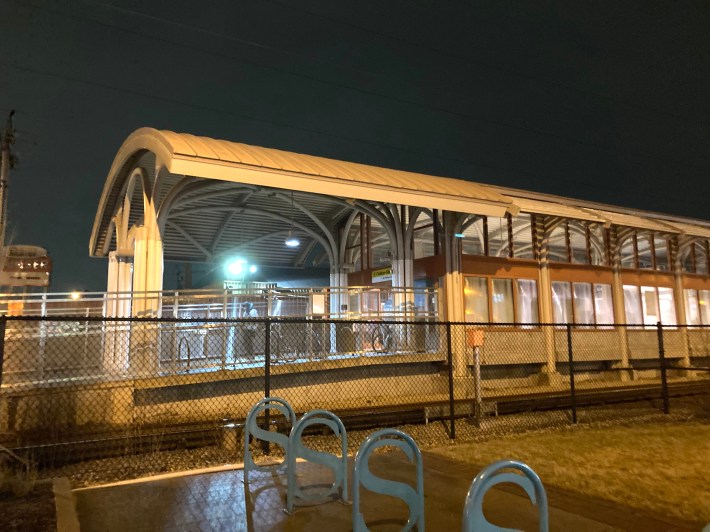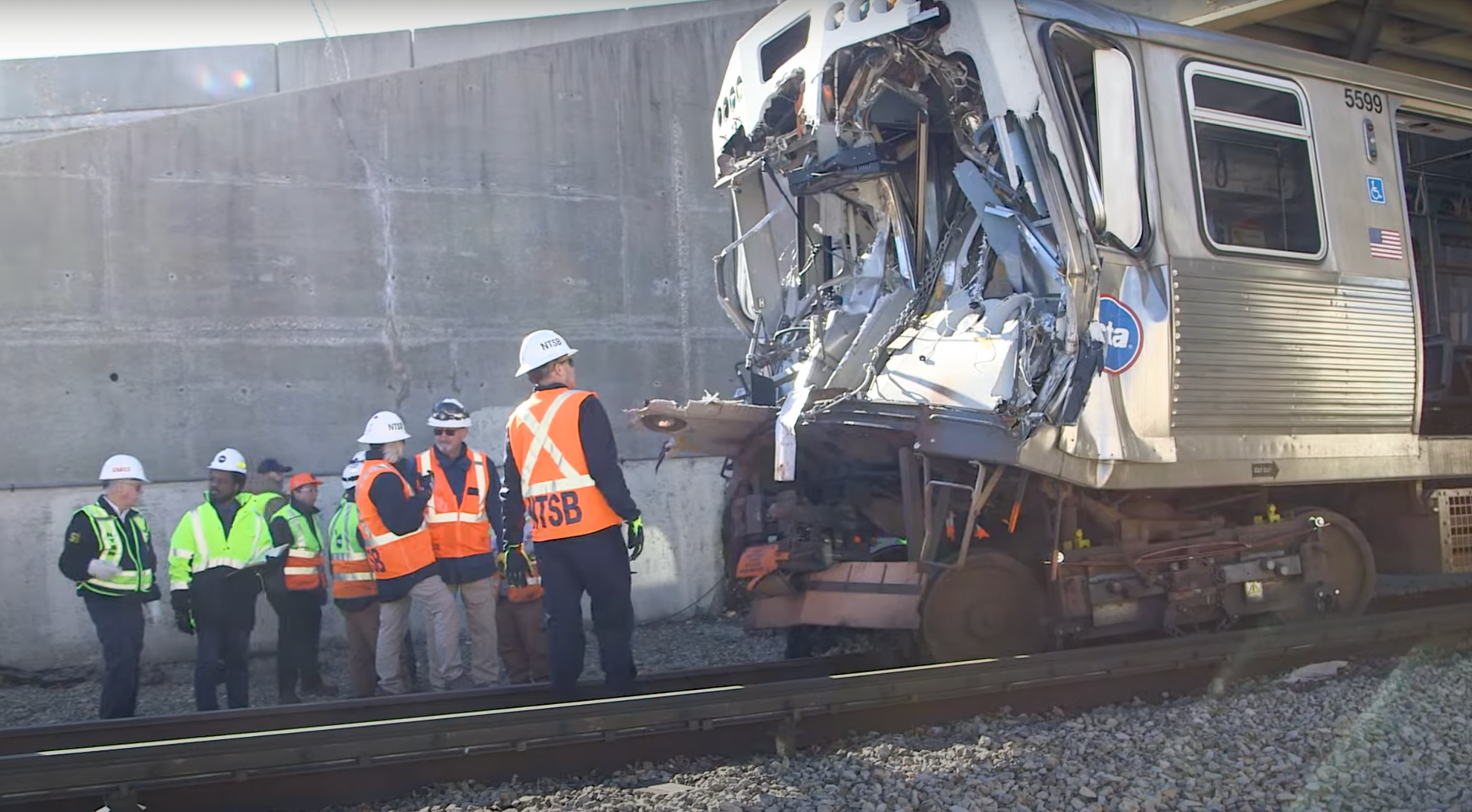
The CTA Yellow Line, aka the Skokie Swift, which runs between Skokie and Rogers Park, has remained out of commission for nearly a month since November 16, when a run crashed into a snow removal machine at Howard Street station. 19 people were hospitalized after that collision, with three of them critically injured, according to federal investigators
As Streetsblog contributor Igor Studenkov reported last week, the service suspension has caused hassles for commuters. The CTA has provided shuttle bus service to and from the northern terminal, Skokie's Dempster station, and Howard, but the pickup and drop-off times have been unreliable. And while the bus drivers are supposed to stop in between at the Skokie-Oakie stop, it's actually common for them to travel non-stop.

However, yesterday there was a light in the tunnel (although the line doesn't operate as a subway) for restoring service. The National Transportation Safety Board released a six-paragraph preliminary report on the crash.
And the CTA published a list of interim safety improvements to Yellow Line operations it plans to do before the route reopens. A reopening date was not announced.
The NTSB document stated that the signal system at the crash site is set up to allow a stopping distance of 1,780 feet or less, and the CTA allowed operators to drive trains at up to 55 mph on the Yellow Line. It said the cars are designed and built by Bombardier Transportation to meet the transit agency's braking specs, and have dynamic brakes, friction brakes, and magnetic track brakes. "All brake systems can be activated by the train’s operator or by the automatic train control system if an operator does not respond appropriately to a signal indication."
The NTSB report said that on November 16, the inbound Yellow Line train driver knew that the snow plow was on the route as part of a training exercise, but didn't know exactly where it was. Right before the collision, the inbound plow operator stopped the vehicle about 370 feet north of a red signal.
The passenger train driver, who was traveling around 54 mph, received a stop command signal because the snow plow was sitting on the track about 2,150 feet in front of the Yellow train, according to the NTSB document. The operator immediately initiated a full-service braking application to stop the train, then saw the plow, previously obscured by a bend in the tracks, and triggered an emergency braking application. The train slowed down to 27 mph before hitting the plow.
The NTSB will continue to investigate, focusing on studying the CTA signal system, and the design and braking performance of the involved railcars, the report states. There will also be "examination of organic material present on top of the running rails investigators collected to determine what impact, if any, this material had on the [crash]".
NTSB chair Jennifer Homendy said yesterday that the the preliminary investigation found that the Yellow Line operator "did not do anything wrong," the Sun-Times reported.

Yesterday the CTA stated that in late November, the transit agency told the NTSB about the interim enhancements the CTA planned to implement. "These are not recommendations the NTSB has provided us or requested of us. They are steps CTA feels are prudent to provide the highest level of safety." Here's what's planned:
• Lowering the speed limit on the Yellow Line from 55 to 35. "CTA is taking a very conservative approach, again out of an abundance of caution," the agency said.
• Expanded cleaning of rails. The CTA says it has cleaned debris and "any accumulated residues, deposits, or films" that may make it harder to stop trains. "It will allow for more friction, which will limit the potential for slipping or sliding of wheels."
• "Manual blocking" for passenger railcars, plus snowplows and other work equipment. This means that the operators of these vehicles will be required to wait to move until getting verbal go-ahead from the CTA's Control Center. "In this way, these railcar and equipment movements are closely scrutinized and monitored through human intervention and direction that does not rely solely on the control of automated systems."
• Training sessions for all rail operators who work out of Howard station. All drivers of Yellow, Red, or Purple trains (the latter can also be assigned to the Yellow Line) will get an in-person presentation about the new policies.
• Ride-alongs. CTA supervisors and managers will join Yellow Line drivers for their first several trips when the line finally reopens, "providing an extra set of eyes and ears as operators make those initial trips, and allowing operators to ask any questions or receive guidance."
These sound like sensible strategies to me. But the CTA release warned that these precautions mean the Yellow Line won't be open to the public in the immediate future. "These activities require time to perform, and once this review is complete, CTA will determine a plan to reopen. Safety continues to be our No. 1 consideration, and reopening won’t occur until we have completed our thorough review."
The Active Transportation Alliance declined to comment on the news. The grassroots transit advocacy group Commuters Take Action indicated that they've got their fingers crossed that trains to-and-from Skokie will soon be in action. "We look forward to the CTA reopening the Yellow Line and hope for safe operation going forward."
So it's a bummer that commuters will still have to ride the non-dependable shuttle buses until the authorities decide it's safe to ride the Yellow Line. But as the old saying goes, "When life gives you lemons, make lemonade."
We heard @JBPritzker tweeted about "the Swift", and thought that meant the CTA Yellow Line to Skokie, the Skokie Swift, was reopening after last month's crash. 😢
— Streetsblog Chicago (@streetsblogchi) December 14, 2023
Info on what's going on with the the 'L' train route: https://t.co/KeQdJD7GtP pic.twitter.com/lb5hw4Lbsf
Get national headlines at Streetsblog USA.

Did you appreciate this post? Please consider making a tax-deductible donation.






